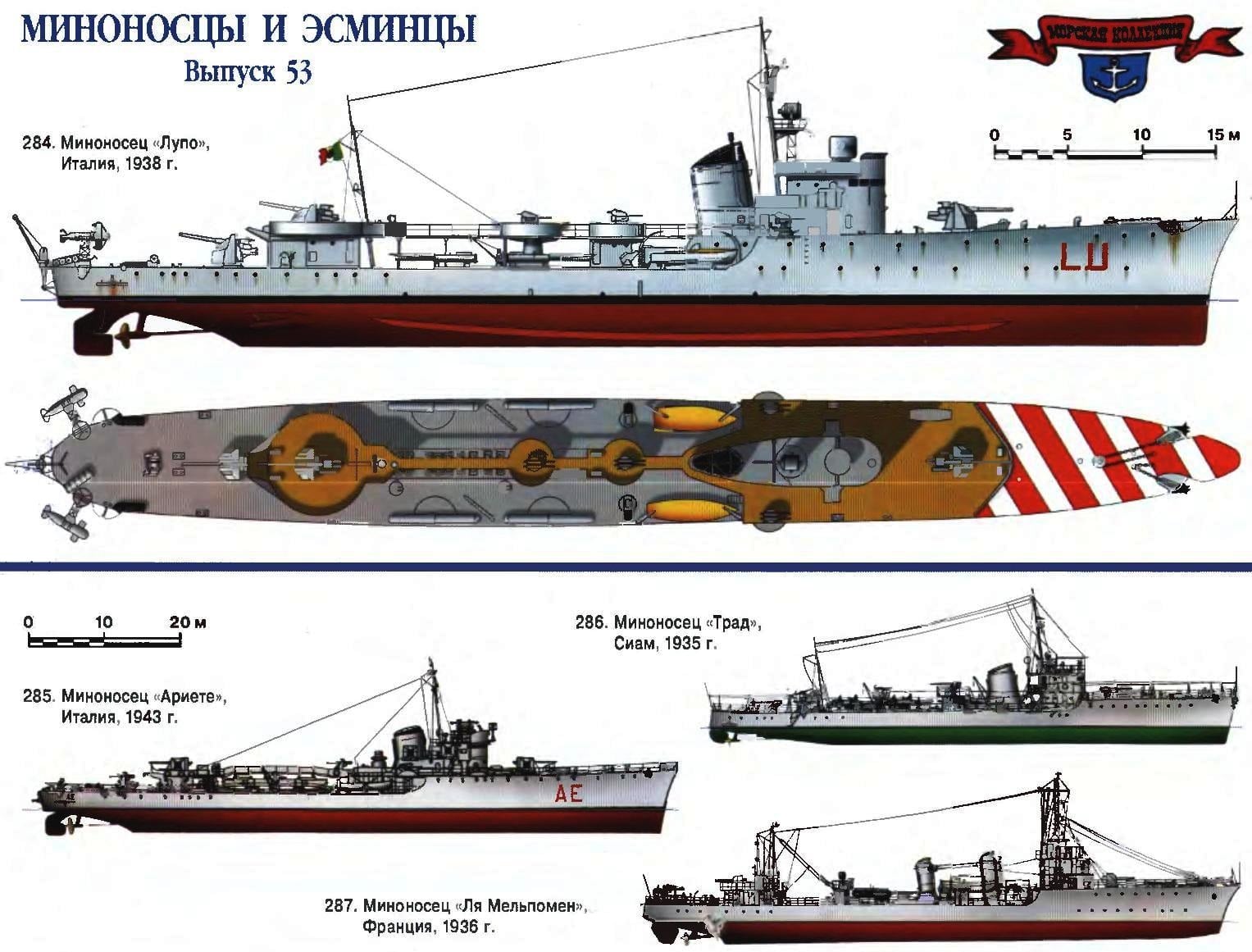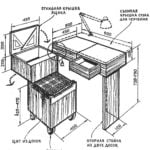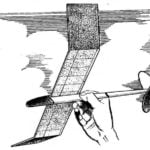 If the aerial part of the German operation for the invasion of Crete in may 1940, no doubt, was an outstanding achievement and entered the history of the art of war, its Maritime component looked just pathetic. The so-called “First light convoy”, intended to capture the airfield at Maleme, consisted of two dozen commandeered the Greeks of motor boats and small coasting boats to the full loaded troops, weapons and ammunition. The only warship, which was assigned to protect the caravan from the enemy fleet, was a small Italian torpedo boat “Lupo” commanded by captain 2 rank, Francesco Mimbelli.
If the aerial part of the German operation for the invasion of Crete in may 1940, no doubt, was an outstanding achievement and entered the history of the art of war, its Maritime component looked just pathetic. The so-called “First light convoy”, intended to capture the airfield at Maleme, consisted of two dozen commandeered the Greeks of motor boats and small coasting boats to the full loaded troops, weapons and ammunition. The only warship, which was assigned to protect the caravan from the enemy fleet, was a small Italian torpedo boat “Lupo” commanded by captain 2 rank, Francesco Mimbelli.
Ridiculous speed, barely reaching four nodes, making the convoy an easy target especially because the British Navy controlled all of the waters North of Crete. The first German convoy left the compound “D” cruisers “Dido”, “Orion”, “Ajax” and three destroyers. It was already night, but the British, who had radar, easily found the target and approached, turned on the floodlights.
Brave “Lupo”, seeing in the twilight of the British ships put a smoke screen to cover the convoy, and immediately entered into battle against six ships, three of which were immeasurably stronger than him. The distance between opponents is quickly decreased to 700 m; the destroyer passed along the starboard side of “Dido” and “Orion”, firing their guns and machine guns. He also fired two torpedoes, but they didn’t hit the target. Then Mimbelli cut a column of British cruisers at the back of “Orion” and ahead of “Ajax”. English shells rained down like hail, but “Lupo” for a long time happily avoided fatal injuries and continued to fiercely fight back. Only an hour later the battle began to subside. Losing his opponent in the dark, the British decided that finally smashed it to pieces. In reality, however, the destroyer remained afloat. He got at least 18 hits 152-mm shells, the ship was warped, the sides riddled, many of the crew killed or wounded, but two hours later, “Lupo” returned to the convoy and participated in the rescue of soldiers from sunken ships. Largely thanks to him that German losses were not very large.
A second convoy, carrying more than four thousand soldiers in Heraklion and consisting of the same boats, again accompanied by only one Italian destroyer “Sagittario”. When in the East we could see the masts of the enemy ships (but it was another British squadron, having in its composition five cruisers and two destroyers), commander of the destroyer Lieutenant Giuseppe Folosi received the command an order to retreat, but did not have time to implement it. The British opened fire with 70 cables, and Polosi had to take an unequal battle. I’ll give him that: putting a smokescreen, he fearlessly rushed at the enemy and fired torpedoes. of Course, the fate of the Italian destroyer would be unenviable, but it was rescued by German dive-bombers. Their attacks forced the British to turn away. The convoy was saved, but the adventure “Saggitario” did not end there. “Junkers” took the destroyer for the enemy, and brought down on him the deadly cargo. Folosi desperately maneuvered, and eventually was able to get away not only from the enemy but from their inattentive allies. At the port of destination it was waiting for an enthusiastic meeting. According to the memoirs of one of participants of events, the German soldiers and officers with the rescue convoy had passed the brave Lieutenant to the main street of Greek town.
So the Italian fleet, in General, failed in the war in the Mediterranean, however, managed to complete and some striking pages of his chronicle. And what’s interesting: the characters in both cases were small and unrepresentative ships belonging to the almost forgotten class of destroyers, the revival of which in some countries was due to purely political reasons…
In the conclusion of international agreements, limit the size of naval forces, the main Mediterranean States — Italy and France — received one small but definite advantage. Contracts neither the number nor the total tonnage of military vessels up to 600 tons not styles limited the variety. In England, the USA and Japan quickly learned that in such sizes it is impossible to create a ship with any reasonable fighting qualities and thus able to accompany the fleet on the ocean. (Suffice it to recall the example of the Japanese “Tomozuri”.) However, restricted Maritime theatres of the case. Small distances are allowed to have a small stock of fuel, and requirements for the seaworthiness could be much less rigid.
Therefore, the Italian Admiral decided to reinforce the fleet at the expense of cheap destroyers, capable of solving a variety of tasks in coastal waters, especially because they are not enrolled in the precious “Treaty” tonnage.
So was born the destroyer “Spica”, which, in contrast to development is clearly unfair to the Japanese, is really almost corresponded to the 600-ton limit. The first series of the 32 units are usually divided into four groups, with slightly different displacement and armament. Two head, “Spica” and “Astor” (sold in 1940, Sweden) had four 40-mm British “POM-POM”, as well as an interesting arrangement of torpedo tubes: two singles on the sides and one paired in the diametrical plane. The vast majority of the rest had four single-tube apparatus gave only two torpedoes in the side volley. Only eight units of the type “Airon”, built at the shipyard “Ansaldo” in Genoa, carrying two pair of apparatus capable of firing on both sides.

284. The torpedo boat “Lupo”, Italy, 1938
One of the destroyers “Spica”, built at the shipyard in Fiume. The standard displacement of 670 t, 1000 t Length overall 80,40 m, width of 8.21 m, draft of 2.85 m. Capacity twin-shaft turbine installations 19000 HP, speed 34 knots. Armament: three 100-mm guns, eight 13.2-mm machine guns, four 450 mm torpedo tubes. Just 1935-1938 built 32 units.
285. The torpedo boat “Ariete”, Italy, 1943
Built by company “Ansaldo”. The standard displacement of 750 tons, full 1110 T. maximum Length 83,5 m, width of 8.62 m, draft 3,15 m. Capacity twin-shaft turbine installation 22 000 HP, speed 31.5 node. Armament: two 100-mm universal guns, ten 20-mm guns, two three-pipe 450 mm torpedo tubes. Only in 1943-1944 built 16 units.
286. The destroyer “Trad”, Siam, 1935
Built in Italy at the shipyard in Monfalcone. The standard displacement of 320 tons, full 475 T. maximum Length 67,97 m, width of 6.40 m, draft 2,13 m. Capacity twin-shaft turbine installation 9000 HP, speed 31 knots. Armament: three 76-mm guns, two 20-mm machine gun, four machine guns, and six 533-mm torpedo tubes. Only in 1935 — 1938 built nine units: “Trad”, “Phuket”, “Pattani”, “Saurastra”, “Chantaburi”, “Rayong”, “Chumporn”, “Cholburi”, “Ancla”. The last two sunk in a battle with the French fleet on 17 January 1941, and the rest written off in the years 1975-1976.
287. Destroyer “La Melpomene”, France, 1936
It was built by the firm “Studio e Chantiers de Bretagne”. The standard displacement of 670 t full 915 T. Length overall 80,70 m, width of 7.96 m, draft 3.07 m. Capacity twin-shaft turbine installation 22 000 HP, speed 34,5 knot. Armament: two 100-mm guns, four 13.2-mm machine guns, two 550-mm torpedo tubes. Only in the years 1936-1938 built 12 units: “La Melpomene”, “La Flor”, “La Pomon”, “L Ifigenia”, “La Bayonet”, “La Cordillera”, “L Incompris”, “La Poursuivant”, “Bombarde”, “Branle”, “Buckie”, “Balista”.
Small, cheap, fast (many of them achieved on tests 37 knots) and did not require a large crew, the destroyers liking Italian admirals. During the war, they proved very useful on an escort service, although their weapons lacked light-aircraft guns and serious anti-submarine assets. However, they mercilessly threw in all sorts of risky adventures. “Expendable fleet” (as some strategists have called a class of fast torpedo ships) had to engage in battle with British cruisers and destroyers to fight the submarines and aircraft, and by the time of the surrender in 1943, 20 destroyers (2/3 of the entire series) was on the bottom of the sea. Particularly significant were the losses in the first half year of the war, so in 1941, followed by laying additional 16 units of type “Cyclone”. As usual, military construction contributed to the fighting qualities. The destroyers lost one of the guns, but were markedly heavier than their standard displacement reached 910 t, the full 1650 tons, and speed dropped to 26 knots. Design errors corrected in the last military series (type “MPM”), wherein the reinforced light anti-aircraft weapons. But, alas, of the 16 laid down in the Italian Navy managed to get only the lead ship. The rest fell into the hands of former allies, the Germans, and quite actively used until the end of the war. Five of them were killed in the fighting surface ships of the British: three guns from destroyers and two torpedo boats. The remaining relatively intact ships after the war went to the countries of the “socialist camp”. Five destroyers joined the Navy revived Yugoslavia, and two were transferred to the Soviet Union. We are used as vessels towing tank, as in the Soviet Union before the war, has accumulated considerable experience in the use of private escort destroyers of the “division of bad weather”, which, although officially listed as a guard by the ships on the tactical and technical elements and combat capabilities differed little from its competitors from Italy and France.
However, the Italian-built destroyers enjoyed some success on the international market and served as part of fleets in various regions of the world — from Scandinavia to Southeast Asia. Since 30-ies of the Mussolini regime strongly flirted with the distant Kingdom of Siam (now Thailand), offering him to completely renovate a small fleet of modern ships — from destroyers to cruisers. The first (and as it turned out, only) there were nine small boats of the type “Trad”, built at the shipyard in Monfalcone, in the years 1935-1936. With a displacement of only 300 t they, nevertheless, had six torpedo tubes, presenting, at least on paper, visible to the far edges of power. However, practice shows that little weapon to have, we must also be able to use it. Early in the morning on 17 January 1941 the French squadron composed of light cruiser “La Motte Picquet” and two outdated patrol ships-aviso utterly defeated the Siamese fleet. Three destroyers went to the bottom, without causing any harm to the French, while those managed a few before the torpedoes hit one of the Royal battleships of coastal defense. Already capitulating to the Germans, France had recorded at his own expense albeit small but convincing victory.
Meanwhile, in Europe the case of the French was much worse. In the early 30-ies they are in response to the growth of the Italian mosquito fleet also got their “600 ton crane”. The initial project “coastal escort ship” was very modest: only two 75-mm guns and four 400-mm torpedo tubes. It is not surprising that naval command rejected it, because almost any enemy could easily and without consequences for themselves to destroy such a ship artillery. The revised version had a few 100-millimetrovogo, but only two torpedo tubes. Ride quality promised to be good. Speed 34,5 knot corresponded to the “normal” destroyers, and a hull shape tailored to the construction of big leaders has helped to ensure good seakeeping. But the number of ships the French were considerably behind their Mediterranean rivals, built in 1933— 1938 only 12 “escortscom”.
Growing political tensions on the eve of the Second world war destroyed the artificial system of contractual limitations. By the time the designers have already seen that in the range of 600 tons is almost impossible to create a high-speed ship without compromising its combat performance. Therefore, the displacement following a series of French destroyers reached 1000 tons, and artillery weapons increased by half: instead of a single one of the guns was supposed to establish a paired, moreover, with great angles of elevation and is able to fire at aircraft. With his 35-node speed destroyer “Le Fier” could be an example of a very successful (by the criterion “cost — efficiency”) of the ship, but history decreed otherwise.
The defeat of France in 1940 found all of the new destroyers on the stocks in Nantes in different degree of readiness. The French made a desperate attempt to tow three unfinished ship to Morocco, but the German air-raids made “Le Fier” thrown ashore, and the others back to the port. Representatives of the Kriegsmarine estimated potential trophies and proceeded to the completion of the remaining six units. However, the shipyard workers deliberately delayed the timing of their entry into operation. He “helped” and allied aircraft. So the Germans managed to complete a fairly extensive work (the destroyers were rebuilt under the German standard with three 105-mm cannons in the stern and two three-pipe 533-mm torpedo tubes) only in April 1944, when they had to hastily flee from the advancing allies. All the ships were blown up and never recovered.
But the French 600-ton crane had a little war. They took part in the evacuation from Dunkirk, and after the capitulation of France, half of them were in the hands of the British. But then there was quite an expected event. “Branle” caught in a storm in the English channel, sank 25 miles from shore without any interference ORS of the adversary. As in the case of Japanese “Tomozuna”, manifested itself in a disregard for the rules of shipbuilding. The British Admiralty immediately brought the remaining “escortscom” from the game. “Buckie” was transferred first to the poles, then the Dutch, then turned into a training ship. The rest of the ships stood until the end of the war at the wall in Hartlepool comfort at sea.
Not the best was the fate of the six ships remaining in France. The occupation of Vichy in the late autumn of 1942 led to the capture of three of them in Bizerte. Initially they were identified in the Italian Navy, but Germany is feverishly hogging all floating, and in April 1943 the former “Bombarde”, “La Pomon” and “Iphigenie” changed Italian designations FR-41 FR-43 to equally faceless German TA-9 TA-11. They all died ignominiously in this and next year. Equally sad fate befell the three destroyers that were in 1942 in Toulon. Badly blown up by teams “La Bayonet” and “Ballista” was raised by the Italians after the capitulation of Italy also fell into the hands of the Germans (TA-12 and TA-13). They waited for the same inglorious end. So made your way all the French destroyers, in no way distinguished either in battle or sailing.
V. KOFMAN



